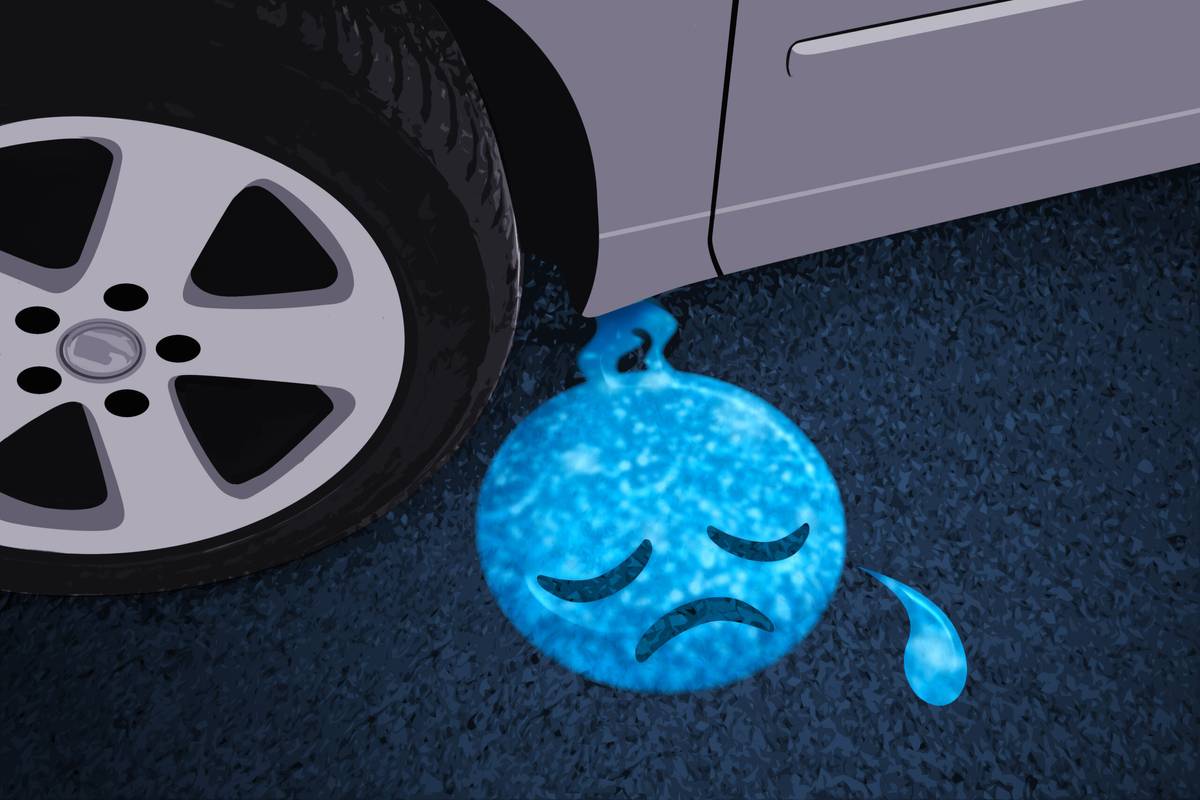Why Is My Car Leaking Water?

Seeing any type of fluid leaking underneath your vehicle can make you worry. However, if you see what looks like water dripping from underneath your car during warm weather when your air conditioner is running, there’s probably no cause for concern. In fact, you want it to drip.
Related: How Does a Car Defroster Work?
A/C Leaks
A part of the air-conditioning system called the evaporator is typically mounted inside the car under the dashboard on the passenger side (some SUVs and vans may have a second one toward the rear of the vehicle). There also can be other air-conditioning components mounted in the engine compartment.
When the air conditioner is running, the evaporator gets cold and produces the cool air that flows out the vents. However, it also produces some water, which is condensation from the air surrounding the evaporator. (It’s the same principle as when you leave a bottle of ice water out on the counter and water droplets form on the outside.) That water is collected and drains out onto the ground, often through a tube. If that tube gets clogged or disconnected, the water can flow onto the carpet in the cabin. This is why you want the water to drip on the ground.
You’ll usually see water dripping from the passenger side of the vehicle at the rear of the engine compartment near the bottom of the windshield. If that’s where you’re seeing the leak — and it’s warm enough out that the air-conditioning system might be running — that’s likely the cause. If the water is coming out the end of the exhaust pipe, that’s also condensation (though not from the A/C); likewise, it’s nothing to worry about.
Aside from water running down after a car wash or driving through a puddle, there’s really no other source of water to be dripping — unless, that is, you’ve filled your windshield-washer reservoir with straight water rather than washer fluid (which keeps it from freezing and is typically either blue or purple) and the reservoir is leaking.
However, there are other possibilities for a leak, though they wouldn’t be water.
More From Cars.com:
- Why Is My Car Leaking Coolant?
- How Do I Find Out if a Car Is Still Under Warranty?
- Why Is My Car Leaking Oil or Another Fluid?
- What Fluids Should I Top Off?
- More Service Articles
Fluid Leaks That Might Spell Trouble
Other fluids in your car have a color to them, be it engine oil, transmission fluid, coolant, power-steering fluid or the aforementioned washer fluid. But two in particular usually have a light, transparent gold or yellow color, which might be tough to discern if it’s dripping: gasoline and brake fluid (the latter could also be brownish), both of which run through lines that go from the front of the car to the rear and would be serious problems if leaking.
How can you tell if it’s water, gasoline or brake fluid? Ideally, you’d put a piece of paper or cardboard under the leak to collect some of the liquid, then pull it out to check it. If that’s not possible, you may have to move the car to expose the puddle, then smell or touch it. It’s best to dip a paper towel or rag into any puddle rather than using your fingers, as you don’t want gasoline or brake fluid on your fingers for any length of time — and certainly not in your eyes.
You can probably tell by the color, but gasoline also has a distinctive smell to it. Brake fluid does, as well; it’s sometimes described as a weaker fish oil scent. If you’re not sure about the latter, you can rub some between your fingers; it will have a slippery, oily feel to it. Just make sure to wash your hands quickly afterward, and don’t rub the brake fluid on any painted surface, as it can eat away at paint.
Leaks from your car are generally a bad thing. But if it’s warm out, the fluid looks like water and it’s coming from the passenger side near the bottom of the windshield, that’s probably a good thing.
Related Video:
Cars.com’s Editorial department is your source for automotive news and reviews. In line with Cars.com’s long-standing ethics policy, editors and reviewers don’t accept gifts or free trips from automakers. The Editorial department is independent of Cars.com’s advertising, sales and sponsored content departments.
Featured stories



